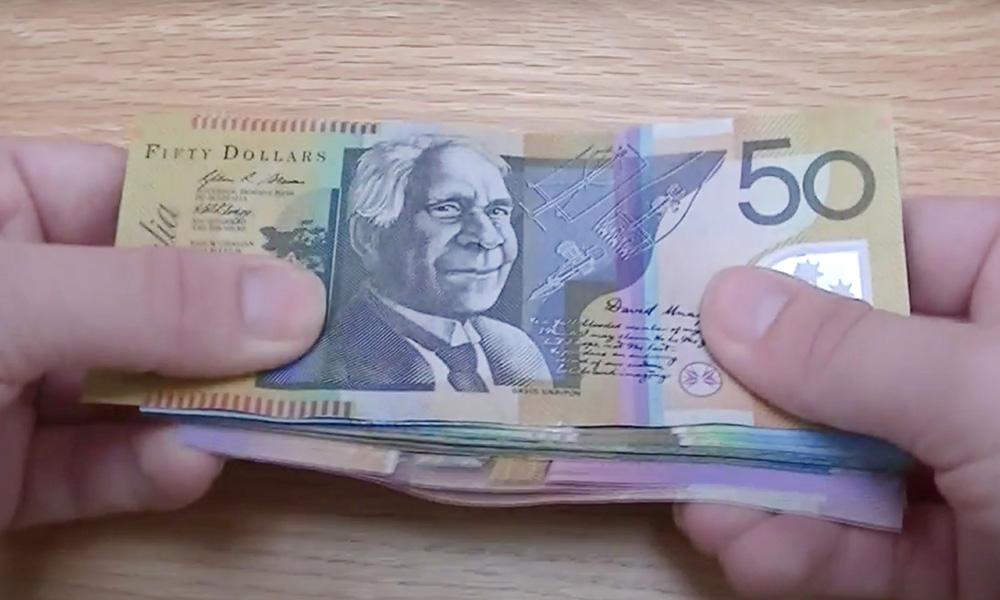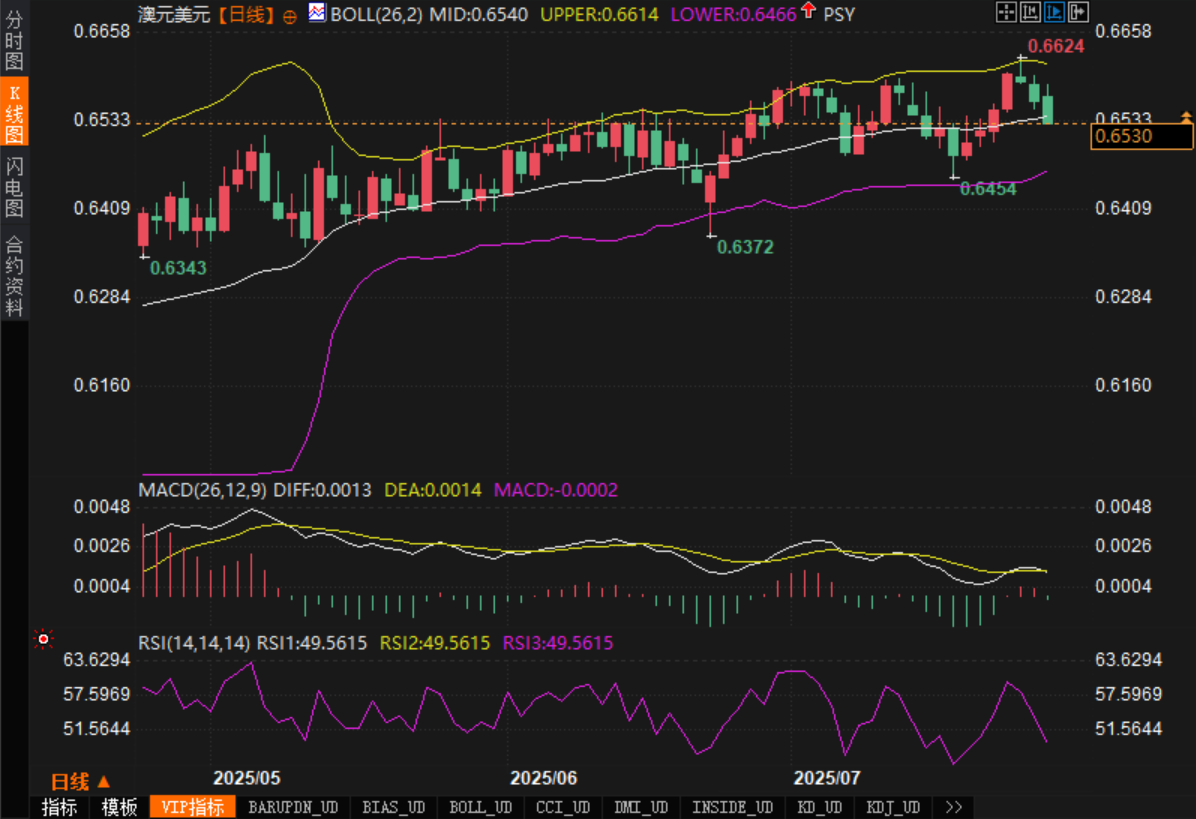Three consecutive negative lines form a top? Beware of the increasing risk of a pullback in the Australian dollar
2025-07-28 16:49:21

This week, the market will focus on Australia's second quarter CPI data (to be released on Wednesday), which will become an important basis for the next interest rate meeting of the Reserve Bank of Australia (RBA). Earlier, RBA Chairman Michele Bullock reiterated that he would firmly curb inflation and stressed that the current global economy is still full of uncertainty. The market generally expects that if the inflation data is strong, the RBA may further postpone the pace of interest rate cuts.
Internal divisions remain at the Federal Reserve. San Francisco Fed President Mary Daly believes that the expectation of two rate cuts this year is "reasonable," but Fed Governor Christopher Waller advocates a rate cut at the July meeting. At the same time, the labor market remains strong, with initial jobless claims in the United States falling for the sixth consecutive week, with the latest data showing 217,000, showing economic resilience.
The initial value of the US Markit composite PMI in July rose to 54.6, a seven-month high, among which the service industry PMI performed particularly well, reaching 55.2, higher than market expectations. However, the manufacturing PMI fell below the boom-bust line to 49.5, reflecting that there are still concerns on the manufacturing side. This "strong service and weak manufacturing" pattern may put some pressure on the US dollar index, thus providing an opportunity for the Australian dollar to rebound.
Technical aspects:
From the current daily chart of the Australian dollar against the US dollar, the exchange rate has adjusted significantly after reaching the stage high of 0.6624, forming a negative line arrangement for three consecutive days, and the short-term correction momentum has increased. The Bollinger Band indicator shows that the exchange rate was blocked and fell back at the upper track (0.6614), and currently fell back to near the middle track (0.6540); analysts believe that the support level below is 0.6466.

In terms of MACD indicator, the fast and slow lines (DIFF, DEA) are glued together and run horizontally, the red column is shortened, the MACD column value is slightly negative (-0.0002), and the short-term momentum is weakening.
The RSI indicator is currently at 49.5615, close to the neutral zone, suggesting that the exchange rate has not yet formed an overbought or oversold signal; in the short term, if the RSI falls below 45, we need to be alert to further release of downside risks.
In summary, judging from a technical perspective, analysts believe that the Australian dollar is currently in the correction stage of an upward trend against the US dollar. If it fails to hold the 0.6540 line in the future, it may further test the support of the 0.6454~0.6466 range below; conversely, if the exchange rate re-stands above 0.6600, the trend is expected to continue.
Market sentiment observation:
The current market sentiment presents a typical "long-short game" pattern. On the one hand, the trade agreement between the United States and the European Union has warmed up risk appetite; but on the other hand, market concerns about Australia's CPI data are still heating up, leading to intensified capital divergence.
From the perspective of risk aversion, the US service industry performed strongly and employment data was solid, but the manufacturing industry weakened, and the overall economic recovery was "mild and unstable." This has led to differences in the market on the Fed's policy path, amplified short-term volatility, and traders generally tend to wait for key data to further guide the direction.
In Australia, the RBA continues to convey a dovish tone, but whether it will actually cut interest rates still depends on the progress of inflation decline. If CPI remains high or the easing schedule is postponed, the market will re-price the RBA policy path. Therefore, although the short-term market sentiment is slightly cautious, it has not completely turned bearish and is still in the "wait-and-see-gamble" stage.
Outlook for the future:
Short-term outlook:
In the short term, the exchange rate faces technical correction pressure, especially after being blocked near the high point of 0.6624, the demand for a pullback has increased. Analysts believe that if the exchange rate cannot hold the 0.6540 line, it will further test the support of the lower Bollinger band;
However, if the Australian CPI data shows an unexpected rise, the exchange rate may see a technical rebound and re-challenge the 0.6600 mark; the short-term trend may maintain a high-level shock structure, with a reference range of 0.6466-0.6624.
Mid- to long-term outlook:
From a trend perspective, the medium- and long-term direction of the Australian dollar still needs to observe the trend of the US dollar index and the direction of the global economy. Analysts believe that if the US economy continues to slow down and the Federal Reserve clearly releases the path of interest rate cuts, the medium-term weakening of the US dollar will boost the Australian dollar. On the contrary, if the US dollar maintains a strong cycle, the upside space of the Australian dollar will be limited;
Domestically in Australia, if inflation continues to ease and prompts the RBA to start an easing cycle, the Australian dollar may face medium-term adjustment risks; but if inflation is stubborn and forces the RBA to maintain high interest rates, it will provide long-term support for the Australian dollar.
- Risk Warning and Disclaimer
- The market involves risk, and trading may not be suitable for all investors. This article is for reference only and does not constitute personal investment advice, nor does it take into account certain users’ specific investment objectives, financial situation, or other needs. Any investment decisions made based on this information are at your own risk.





















